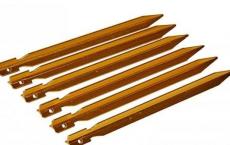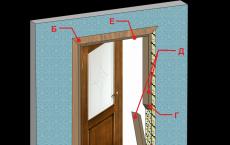Homemade table for router
Having received a garden plot, I started carpentry. After 10-15 years, I have accumulated a collection of power tools in my workshop, numbering 27 items. A special place in it is occupied by a manual milling machine, which enables an amateur carpenter to make professional objects of good quality from wood. With its help, it is possible to quickly and accurately profile edges and make connections. However, it soon became uncomfortable to work with a milling machine as a hand tool.
I first felt the need to have a milling machine when I was making a wooden grate for a bath: I had to make 40 oval planks. I had to build a simple milling table. I installed a chipboard sheet with a hole in the middle on a metal frame, attached an old milling machine to a 10 mm plywood sheet and fixed it to the chipboard - the milling table is ready. It was convenient to work with him, but soon I wanted better.
Having studied a dozen and a half sites of do-it-yourselfers, I realized that it is possible to make a very good milling machine, moreover, in a budget version. Started with project development.
The main dimensions of the machine were determined by two products I have: a metal frame picked up from a landfill and a 2050 W SPARKY X 205CE hand mill.
Do-it-yourself milling table for a router: drawings

A classic milling machine, made on the basis of a manual router, consists of six main elements: a bed 1, a worktop 2, a mounting plate 3, a manual router 4, an elevator 5 that allows you to adjust the cutter reach, and a longitudinal stop 6.
Milling table top

A mounting plate is used to mount the router on a table top. Attaching the router to the insert plate has two advantages over attaching it directly to the underside of the table top. Firstly, the plate saves 6-10 mm of cutting depth compared to mounting the router to a cover with a thickness of 20 mm or more. Secondly, the plate makes it easy to remove the router for changing tools.

For making mounting plate (Fig. 2) I used a 10 mm lavsan textolite sheet. The location of the mounting holes from the sole of the router was transferred to paper, and from paper to the plate. I made a hole d61 mm in the center of the plate and milled a fold in it for installing interchangeable liners for a specific cutter.


Cut the table top to size. I marked out the necessary holes, grooves and an opening for the mounting panel according to the drawing. Cut out the opening with a jigsaw.
Prepared guide bars for the copy cutter. The height of the bars should be such that the copy cutter with the upper bearing is in constant contact with them when processing the rebate.
I installed the mounting plate on the tabletop, secured two long bars with clamps and attached two short ones to them using a stapler (photo 7). To ensure a guaranteed gap between the fold and the mounting plate, I used thin spacers 0.2 mm thick on each side.
For reliability, I attached the short guide bars to the long ones using small squares.

Removed the plate and gaskets. I installed a copy cutter with an upper bearing in the collet of the router. Leaning the sole of the router on the guide bars, set the milling depth of 2 mm in the tabletop. I made a few shallow cuts, increasing the overhang of the cutter until it reached a depth of 0.5 mm more than the thickness of the mounting plate.
He took off the copy bars. I cleaned the edges of the fold and opening with the help of a skin.
Using the mounting plate as a template, I drilled mounting holes in the corners. On the reverse side of the tabletop, I installed mortise furniture nuts into the mounting holes.
I milled three grooves for aluminum guides using a 19 mm cutter, which I fixed in the grooves with self-tapping screws. The tabletop of the milling machine is ready.
Elevator for milling table
The next node of the milling machine, which deserves special attention, is the mechanism for feeding the cutter into the cutting zone, or the elevator. The cost of a professional elevator sold in stores reaches 50-60 thousand rubles. This is a high-precision and convenient mechanism, but for the purposes of amateur carpenters, it is, of course, redundant.
When developing my own elevator design, I set myself the goal of using the maximum number of purchased parts. The easiest way to solve the problem of the translational movement of the milling spindle is with the help of a pair of screw / nut: when the nut is fixed from axial movements, the screw performs translational movement.

The design of the elevator is shown in figure 4. As a moving element, I used a M16 bolt 200 mm long. For support, I used a long M16 nut, which I welded to a steel plate. The bolt is driven by a handwheel attached to it through a welded support washer.



